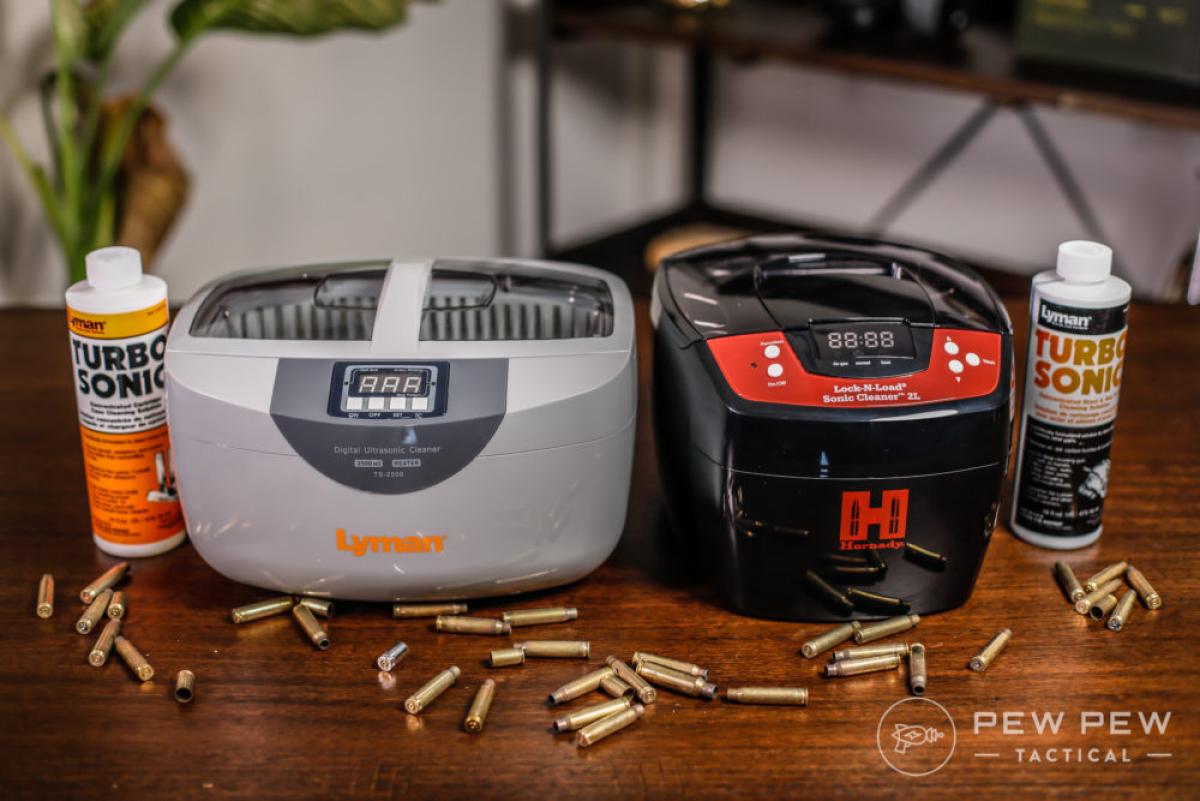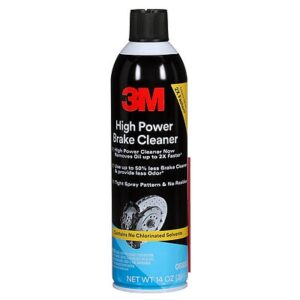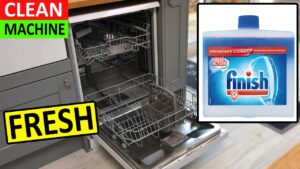No, you should not put plastic in an ultrasonic cleaner. Ultrasonic cleaning is not suitable for low-density, flexible, and thermosetting plastics like LDPE, as they can crack or be damaged by the high-frequency sound waves used in the cleaning process.
These plastics actually absorb some of the ultrasonic power, reducing the effectiveness of the cleaning action. It is best to use ultrasonic cleaning for parts with hard surfaces, such as metal, while being cautious with softer surfaces.
Understanding Ultrasonic Cleaning
Ultrasonic cleaning can be effective for certain types of plastic, but not all. Low-density, flexible, and thermosetting plastics like LDPE are not suitable for ultrasonic cleaning as they can crack and get damaged. It’s important to consider the type of plastic before deciding to use an ultrasonic cleaner.
What Is An Ultrasonic Cleaner?
An ultrasonic cleaner is a device commonly used for cleaning various objects and materials. It uses ultrasonic waves to generate tiny, high-frequency vibrations in a liquid cleaning solution. These vibrations create microscopic bubbles that collapse, generating a cleaning action known as cavitation.
This powerful cleaning process is effective in removing dirt, debris, grease, and contaminants from the surface of objects. Ultrasonic cleaners can be used for a wide range of cleaning purposes, including jewelry, eyeglasses, dental instruments, industrial parts, and more.
How Does An Ultrasonic Cleaner Work?
- Ultrasonic cleaners operate by generating high-frequency sound waves, typically between 20-40 kHz.
- These sound waves create microscopic bubbles in the liquid cleaning solution.
- As the bubbles collapse, they release energy in the form of heat, pressure, and powerful cleaning action.
- This process, known as cavitation, effectively cleans and removes contaminants from the submerged objects.
- The cleaning solution used in an ultrasonic cleaner plays a crucial role in the overall effectiveness of the cleaning process.
Benefits Of Using An Ultrasonic Cleaner:
- Efficient cleaning: Ultrasonic cleaners can remove dirt, grease, and contaminants from surfaces that are difficult to reach or clean manually.
- Time-saving: The cavitation process in ultrasonic cleaners enables fast and efficient cleaning, reducing the time and effort required compared to traditional cleaning methods.
- Gentle on delicate items: Ultrasonic cleaning is gentle and non-abrasive, making it suitable for delicate items such as jewelry, watches, and eyeglasses.
- Versatile cleaning applications: Ultrasonic cleaners can be used for a variety of objects and materials, including jewelry, dental instruments, electronic components, automotive parts, and more.
- Environmentally friendly: Ultrasonic cleaning typically requires minimal or no use of harsh chemicals, making it an eco-friendly cleaning method.
- Consistent cleaning results: The controlled and precise cleaning action of ultrasonic cleaners ensures consistent results, making them ideal for industries where cleanliness is critical, such as medical and pharmaceutical fields.
Ultrasonic cleaners are versatile and efficient devices that utilize high-frequency sound waves to generate cavitation for effective cleaning. They offer numerous benefits, making them a preferred choice for various cleaning applications.

Credit: www.pewpewtactical.com
Factors To Consider For Cleaning Plastics
Ultrasonic cleaners can be used to clean certain types of plastics, but it’s important to consider the material’s density and flexibility. Low-density, flexible, and thermosetting plastics like LDPE are not suitable for ultrasonic cleaning as they may crack or suffer damage from the high-frequency sound waves.
It’s best to avoid using ultrasonic cleaners on these types of plastics to prevent any potential problems.
Properties Of Different Types Of Plastics:
- Plastics are versatile materials widely used in various industries due to their lightweight, durability, and resistance to chemicals. However, not all plastics are the same, and it’s important to understand their properties before cleaning them in an ultrasonic cleaner.
- The properties of different types of plastics can vary, including their melting point, hardness, and chemical resistance. Here are some common types of plastics and their properties:
- Polyethylene (PE): PE is a thermoplastic that is tough, flexible, and resistant to chemicals. It has a low melting point and can be easily cleaned in an ultrasonic cleaner.
- Polypropylene (PP): PP is another thermoplastic known for its high melting point and excellent chemical resistance. It is commonly used for packaging and laboratory equipment. PP can be safely cleaned in an ultrasonic cleaner.
- Polyvinyl Chloride (PVC): PVC is a thermoplastic that is commonly used in construction and plumbing applications. It has a low melting point and can be safely cleaned in an ultrasonic cleaner.
- Polycarbonate (PC): PC is a thermoplastic known for its high impact resistance and transparency. It has a higher melting point compared to other plastics and can be safely cleaned in an ultrasonic cleaner.
- Acrylic (PMMA): PMMA is a thermoplastic that is lightweight and transparent. It has a low melting point and can be safely cleaned in an ultrasonic cleaner.
- Nylon (PA): PA is a thermoplastic known for its high strength and toughness. It has a high melting point and can be cleaned in an ultrasonic cleaner, but care should be taken to avoid excessive heat.
Temperature Sensitivity Of Plastics:
- Plastics have different temperature sensitivities, and it’s important to consider this factor when using an ultrasonic cleaner to clean plastics.
- Excessive heat can cause deformation, warping, or melting of certain types of plastics. Therefore, it’s crucial to determine the temperature limit for each type of plastic before cleaning it in an ultrasonic cleaner.
- Some plastics, like polyethylene and polypropylene, have a higher temperature resistance and can withstand higher cleaning temperatures without any issue.
- On the other hand, plastics like PVC and acrylic have lower temperature resistance and should be cleaned at lower temperatures to avoid damage.
Chemical Compatibility With Cleaning Solutions:
- Another important factor to consider when cleaning plastics in an ultrasonic cleaner is the compatibility of the plastic with the cleaning solution.
- Certain plastics can react with or dissolve in certain cleaning solutions, leading to damage or discoloration. It’s crucial to ensure that the cleaning solution is compatible with the plastic being cleaned.
- Generally, mild alkaline or neutral cleaning solutions are suitable for cleaning most types of plastics. However, it’s always recommended to refer to the plastic manufacturer’s guidelines or consult with an expert to determine the most appropriate cleaning solution for a specific type of plastic.
- Avoid using harsh chemicals, solvents, or abrasive cleaners that can damage or degrade the plastic surface.
Cleaning plastics in an ultrasonic cleaner requires considering factors such as the properties of different types of plastics, their temperature sensitivity, and chemical compatibility with cleaning solutions. By understanding these factors, you can ensure effective and safe cleaning of plastics in an ultrasonic cleaner.
Guidelines For Cleaning Plastic In An Ultrasonic Cleaner
Cleaning plastic in an ultrasonic cleaner requires careful adherence to these guidelines. Ensure not to use flammable liquids, suspend parts instead of placing them in glass containers, and avoid cleaning low-density, flexible plastics as they can be prone to damage.
Follow these tips for effective and safe plastic cleaning in an ultrasonic cleaner.
Proper preparation before cleaning:
- Make sure the plastic item being cleaned is free of any loose dirt or debris.
- Check for any cracks or damage in the plastic that could be worsened by the cleaning process.
- Remove any removable parts or accessories from the plastic item before placing it in the ultrasonic cleaner.
Choosing the right cleaning solution:
- Use a mild, non-abrasive cleaning solution specifically designed for use with plastic.
- Avoid using harsh chemicals or solvents that could damage the plastic.
- Follow the manufacturer’s instructions regarding the appropriate cleaning solution to use for the specific type of plastic.
Time and temperature considerations:
- Consult the manufacturer’s guidelines to determine the recommended cleaning time for the plastic item.
- Keep in mind that cleaning for too long or at excessive temperatures could potentially deform or warp the plastic.
- Use the recommended temperature settings provided by the manufacturer to ensure safe and effective cleaning.
Handling delicate or fragile plastic items:
- Take extra precautions when cleaning delicate or fragile plastic items to avoid damage.
- Place the plastic item in a protective mesh or basket to prevent direct contact with the ultrasonic cleaner’s vibrations.
- Consider using lower power settings or shorter cleaning times for delicate plastics to minimize the risk of damage.
Proper disposal of cleaning solution:
- Dispose of the used cleaning solution according to local regulations and guidelines.
- Do not pour the cleaning solution down the drain or dispose of it in the regular trash.
- Use proper containers or receptacles designated for hazardous waste disposal.
Remember, it is essential to follow the manufacturer’s instructions and guidelines for both the ultrasonic cleaner and the plastic item being cleaned. By taking the necessary precautions and using the appropriate cleaning solution, you can effectively clean plastic items without causing any damage.
Tips For Effective Cleaning Of Plastic In An Ultrasonic Cleaner
When it comes to cleaning plastic in an ultrasonic cleaner, it is important to choose the right type of plastic. Low density, flexible, and thermosetting plastics like LDPE may crack and get damaged by the high-frequency sound waves. It is best to avoid using these types of plastics in the ultrasonic cleaner.
Using appropriate cleaning cycles:
- Select a gentle cleaning cycle specifically designed for cleaning plastics. This will prevent any damage to the plastic items while ensuring effective cleaning.
- Avoid using aggressive cleaning cycles, as they may cause the plastic to become brittle or discolored.
Proper positioning of plastic items for optimal cleaning:
- Place the plastic items in the cleaning tank in a way that allows the ultrasonic waves to reach all surfaces. This ensures thorough cleaning and removes contaminants from hard-to-reach areas.
- Position the plastic items away from the edges of the tank to prevent them from touching the sides, as this could cause damage or reduce the effectiveness of the cleaning process.
Avoiding overcrowding the cleaning tank:
- Do not overcrowd the cleaning tank with too many plastic items. Overcrowding can hinder the ultrasonic waves from reaching all surfaces and reduce the overall cleaning efficiency.
- Leave enough space between each item to allow for proper agitation and ensure optimum cleaning results.
Post-cleaning care for plastics:
- After the cleaning process, carefully remove the plastic items from the cleaning tank and rinse them thoroughly with clean water. This will help remove any residue or cleaning solution.
- Gently dry the plastic items using a soft, lint-free cloth to avoid scratching or damaging the surface.
- Avoid using harsh chemicals or abrasive cleaning agents on plastic items, as they can cause irreversible damage. Stick to mild, plastic-friendly cleaning products if further cleaning is required.
By following these tips, you can effectively clean plastic items in an ultrasonic cleaner while ensuring their longevity and maintaining their quality.
Potential Risks And Precautions When Cleaning Plastics
Ultrasonic cleaning can be risky for certain plastics. Low density, flexible, and thermosetting plastics like LDPE are prone to cracking or damage when exposed to high-frequency sound waves. These plastics absorb some of the ultrasonic power, reducing the effectiveness of the cleaning process.
It is important to exercise caution and choose the appropriate cleaning method for each type of plastic.
Effects Of Excessive Heat Or Chemical Exposure On Plastics:
- Exposure to excessive heat or harsh chemicals in an ultrasonic cleaner can cause damage to plastics.
- Plastics may melt, warp, or become discolored when exposed to high temperatures.
- Certain chemicals can react with the plastic material, leading to degradation or corrosion.
Damages That Can Occur To Certain Types Of Plastics:
- Not all plastics are suitable for cleaning in an ultrasonic cleaner.
- Delicate plastics such as PVC, acrylic, and polycarbonate are more prone to damage.
- These plastics can become brittle, cracked, or even shattered when subjected to the cleaning process.
Precautions To Prevent Damage Or Distortion Of Plastic Items:
- Choose a suitable cleaning solution: Use a mild detergent or specialized cleaner specifically designed for cleaning plastics.
- Test before cleaning: Conduct a small-scale test on a discreet part of the plastic item to ensure compatibility with the ultrasonic cleaner.
- Use appropriate temperature settings: Avoid high-temperature settings that can cause damage to the plastic.
- Consider using a protective cover: If the plastic item is delicate or has sensitive areas, using a protective cover, such as a mesh or basket, can prevent direct contact with the ultrasonic cleaning solution.
- Increase the time incrementally: If unsure about the plastic’s tolerance, start with shorter cleaning cycles and gradually increase the time to prevent any potential damage.
- Regularly inspect plastic items: After cleaning, carefully examine the plastic for any signs of damage, warping, or distortion. If detected, discontinue using the ultrasonic cleaner for that particular plastic item.
Remember, being cautious and following these precautions will help ensure the safety and longevity of your plastic items during ultrasonic cleaning.
Frequently Asked Questions For Can You Put Plastic In An Ultrasonic Cleaner
What Can You Not Put In An Ultrasonic Cleaner?
Do not put alcohol, gasoline, or any flammable liquids in an ultrasonic cleaner as they can cause a fire or explosion. Also, avoid using low-density, flexible, and thermosetting plastics as they may crack or get damaged due to the high-frequency sound waves.
Can You Put Glass Or Plastic Containers In Ultrasonic Cleaner?
Plastic containers are not recommended for ultrasonic cleaning as they may shatter due to the high-frequency sound waves. It’s best to use metal beakers, baskets, or trays instead.
Can You Use A Ziploc Bag In An Ultrasonic Cleaner?
You can use a Ziploc bag in an ultrasonic cleaner, but it is not recommended for cleaning plastics.
Can You Put A Polymer Frame In An Ultrasonic Cleaner?
Yes, you can safely put a polymer frame in an ultrasonic cleaner.
Conclusion
It is important to consider the type of plastic before putting it in an ultrasonic cleaner. Low density, flexible, and thermosetting plastics such as low-density polyethylene (LDPE) should be avoided as they are prone to cracking and damage from the high-frequency sound waves.
These plastics also absorb some of the ultrasonic power, reducing the effectiveness of the cleaning process. On the other hand, hard polymers are generally safe to clean in ultrasonic cleaners. It is crucial to use proper containers such as beakers, metal baskets, or metal trays to ensure the safety of the plastic and prevent any accidents.
Remember to avoid putting flammable liquids or glass containers in the ultrasonic cleaner to prevent any potential risks. Understanding the limitations of ultrasonic cleaning with plastics will help you make informed decisions and ensure the longevity of your plastic items.



